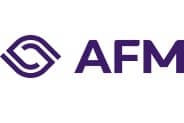Dit bericht is ouder dan drie jaar. De inhoud is daarom mogelijk niet meer actueel.

AFM: voer dialoog met accountant over materialiteit in jaarrekening
Voor beleggers, analisten en financiers kan de gehanteerde materialiteit in de controleverklaring belangrijke informatie bieden bij het nemen van economische beslissingen. De Autoriteit Financiële Markten (AFM) heeft samen met de CEAOB verkend hoe materialiteit door de Big-4-accountantsorganisaties wordt toegepast bij wettelijke controles van Organisaties van Openbaar Belang (OOB). De inzichten geven aanknopingspunten voor een dialoog tussen gebruikers van jaarrekeningen, ondernemingen, auditcommissies en accountants.
Informatie relevant voor economische beslissingen
Informatie is materieel als het onjuist weergeven of weglaten hiervan van invloed kan zijn op de economische beslissingen van gebruikers van jaarrekeningen. Bij het controleren van de jaarrekening moet de externe accountant inschatten wat materieel is voor de gebruikers. In de controleverklaring van een OOB wordt dit beschreven, net als de grondslag waarop de materialiteit is gebaseerd. Gebruikers krijgen zo een indicatie van de diepgang van de uitgevoerde werkzaamheden en informatie over de grootte en de aard van de fouten die de accountant heeft gecorrigeerd.
Materialiteit zowel kwantitatief als kwalitatief van aard
De oordeelsvorming van de externe accountant speelt een grote rol bij het bepalen van materialiteit, omdat elke wettelijke controle specifieke kenmerken heeft. Er wordt een bepaalde omvang voor materialiteit gehanteerd, maar er wordt ook gekeken naar kwalitatieve aspecten. Een relatief kleine post, zoals de bestuurdersbeloningen, kan daardoor ook materieel zijn.
Stel vragen op aandeelhoudersvergadering
Uit de verkenning blijkt dat er enkele verschillen zijn tussen de Big-4 in hun methodologie en de toepassing daarvan bij de bepaling van materialiteit. Gebruikers kunnen de accountants daarop bevragen: hoe is de materialiteit bepaald en welke kwalitatieve aspecten zijn meegenomen? Dat kan bijvoorbeeld op de aandeelhoudersvergadering. In het rapport zijn vragen opgenomen die gebruikers hierbij op weg kunnen helpen.
Verkenning op basis van 40 wettelijke controles van jaarrekeningen van OOB’s
De Committee of European Oversight Bodies (CEAOB) is het orgaan voor Europese samenwerking op het gebied van toezicht op accountantsorganisaties. De AFM gebruikte de gegevens uit een gezamenlijke survey. Daarin betrok zij 40 wettelijke controles van jaarrekeningen van OOB’s. De AFM geeft in deze verkenning geen oordeel over de naleving van wettelijke normen of de kwaliteit van de wettelijke controles.
Contact bij dit artikel

Wilt u het laatste nieuws van de AFM ontvangen?
Schrijft u zich dan in voor onze nieuwsbrief, dan houden wij u op de hoogte.